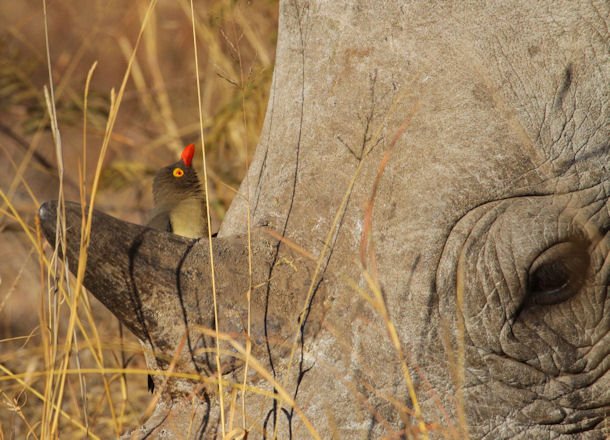
A close encounter with a couple of White Rhinos gave me a good opportunity to get a proper look at some Red-billed Ox-peckers Buphagus Erythrorhynchus that often accompany them.

Whilst the birds are usually associated with clearing ticks and dead skin, they are not averse to a bit of blood-letting. In fact it is widely thought that they prefer blood to bugs.
A study showed that a herd of cattle from which ox-peckers were shooed away over a prolonged study period showed no significant reduction in ticks compared to a herd which were allowed to host the birds. They did however show an increased incidence of wounds which the birds were thought to maintain and re-open.
Rhino skin is very tough and despite spending much of their time amongst the thorn bushes, scratches are usually only superficial. Perhaps this is why the ox-peckers spend more time around the head. Vulnerable softer skin around the eyes, nostrils and lips may be more prone to scratching and the birds are not averse to a bit of snot and saliva when times are hard. There is also the hard to resist allure of the earwax. The same study showed that the ‘peckered’ birds had a reduced amount of earwax compared to the herd which were deprived of their ‘cleaners’.
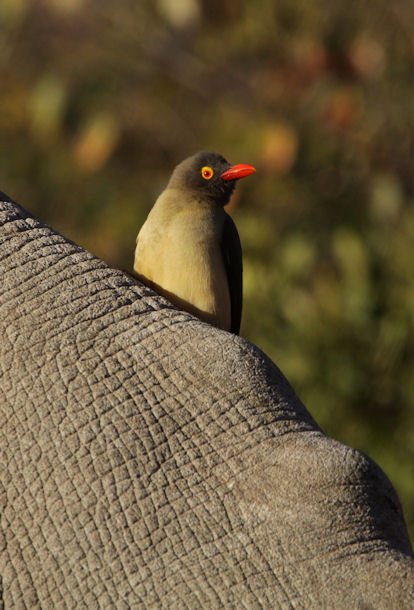
The White Rhino is a sociable grazer and can often be seen in small, relaxed groups. Look for the eponymous wide lips.
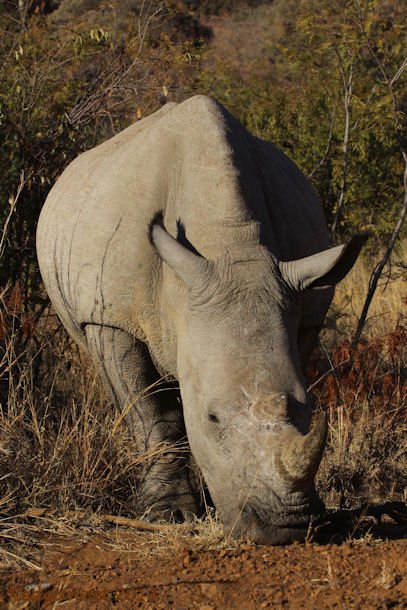
The Black Rhino is a browser with a hooked upper lip. It feeds alone on the thorny acacia bushes and is prone to being a touch spiky itself. Ironically the biggest similarity between the species is their colour (grey).
Ticks are not fussy and work hard to pierce the thick skin or sensitive parts of both types and the ox-peckers are similarly casual as long as there is blood, earwax and ticks.
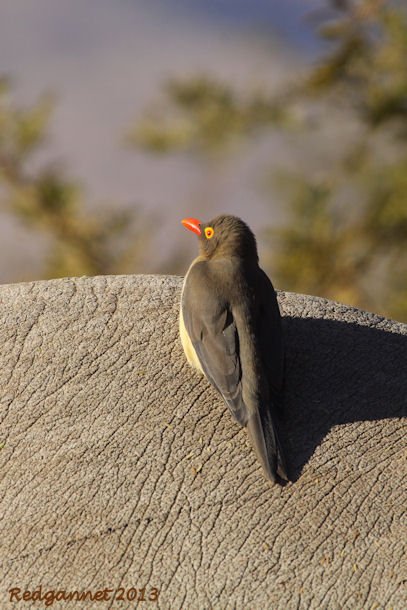
I hope you will forgive me for concentrating more on the rhino, but they were very big and very close. They are fairly heedless of vehicles in Pilanesberg National Park, but it pays to respect their size and potential sudden turn of mood and speed.
The Fork-tailed Drongo doesn’t claim to bring any benefit to the Rhinos, but neither does it cost the rhino to have it around. It simply follows them to see what bugs they kick up as they move through the bush.
It is more usually seen, strategically perched, on a branch close to the rhino’s shoulder. This way it can see anything that is disturbed by the huge grazing mouth, or brushed from the bushes as the rhino passes.
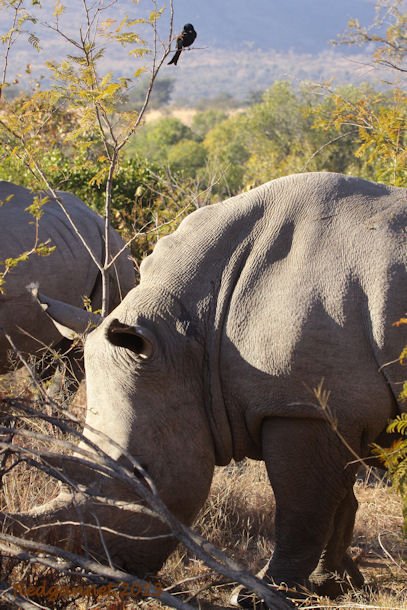
If you enjoyed this post and would like to see more great images of birds, go to our 10,000 Clicks section where you will find our big (and growing) gallery page here at 10,000 Birds.


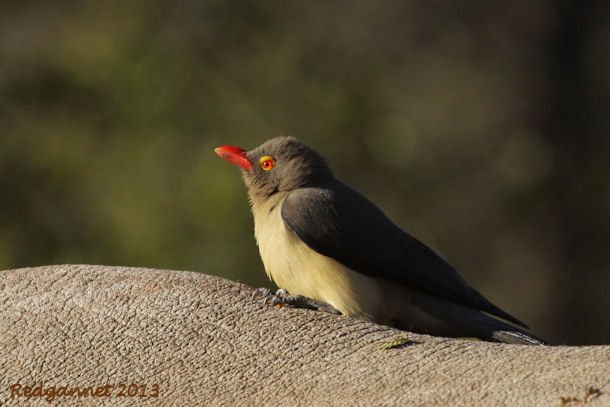

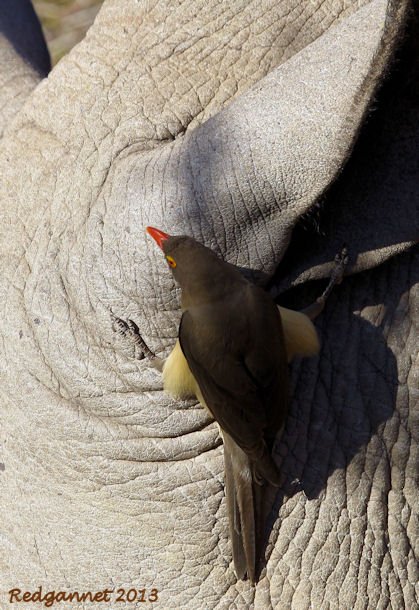
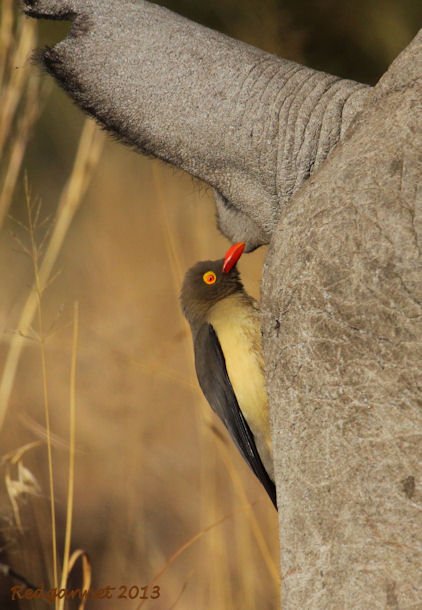
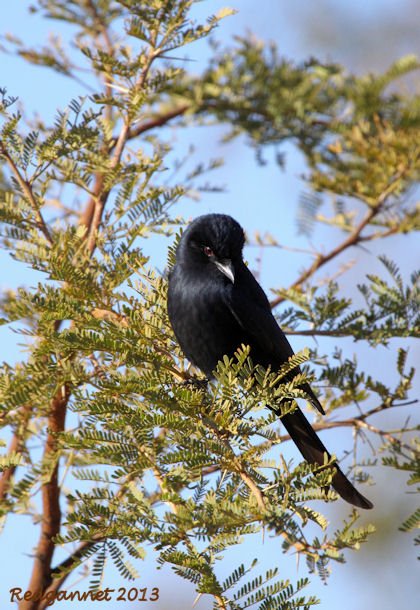











This post is awesome. I am jealous. That is all.
OMG! Nice Rhinos but the birds are equally awesome. Hopefully will still be there when I get to Africa in a very distant future. Thanks for the images.